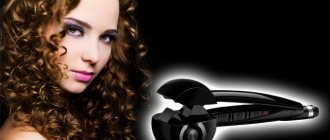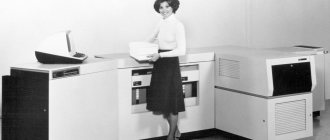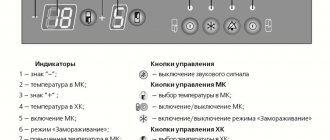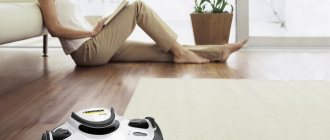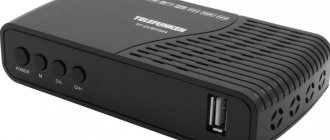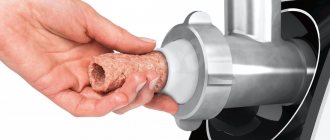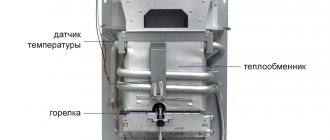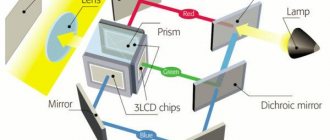The principle of photoepilation
When carrying out photoepilation, the principle of operation is that high-intensity light flashes based on IPL heat the hair, after which the destruction of the high-molecular pigment - melanin, which the hair follicle contains. The hair eventually falls out with the hair follicle and hair growth stops. Scattered flashes of rays during photoepilation emit different lengths from 500 nm. up to 1200 nm., this acts not only on one follicle, but also on the area around it. In clinics, photoepilation is actively used not only to combat unnecessary vegetation, but also to rejuvenate facial skin, get rid of age spots on the body and remove fine wrinkles. Experts distinguish other types of photoepilators, such as:
- SHR - Super Hair Removal - a pulsating intense beam of light that allows you to most gently remove excess hair without causing unpleasant and painful sensations. Thermal wavelength of the treated area is up to 800 nm. - this is a comfortable temperature that eliminates the risk of getting burned and does not allow the skin to overheat. The full course of SHR consists of several sessions over a long period of time. The pulse frequency is 10 Hz, thanks to this it is possible to remove even the lightest, gray and vellus hair. Modern modules are equipped with a cooling system to minimize pain during photoepilation.
- Elos hair removal (E-light) or Electro-Optical Synergy is a modern photo technique that went on sale not long ago. It affects the skin using two energies of light and electric current. In one flash, E-light heats up an area of the hair follicle, damages actively growing hair and then destroys it. For different epilated areas, the following wavelength is used:
| Impact | Wavelength |
| acne removal | up to 500 nm. |
| pigmentation removal | up to 600 nm. |
| removal of vascular pathologies | up to 650 nm. |
| removal of unwanted hair | up to 1200 nm. |
The penetration depth of the beam depends on the wavelength. The ELOS photoepilator has wide efficiency and functionality in terms of power and flash frequency, which are adjusted individually for each client. Thanks to modern parameters, the procedure is as safe as possible.
- AFT – Advanced Fluorescence Technology or advanced fluorescent technology. This is the most painless type of hair removal. AFT technology combines laser hair removal and photo. This combination allows you to remove dark and coarse hair on fair skin with a laser, and lighter and finer hair on dark skin with the help of light energy. To evenly process hair in an area, special attachments are used that distribute a rectangular pulse rather than a peak one. And to make the procedure as painless as possible, we use In Motion technology (cooling “In Motion”) - a unique cooling system for the tip down to -3 C. find out
Photoepilation technologies
There are two technologies for photoepilation that are performed in the salon: Elos and IPL. They both ensure total destruction of the hair follicles, but the degree and effectiveness of their impact varies.
How a photoepilator works depends on what technique you choose to remove unwanted hair.
Features of IPL
Classic photoepilation technology, which is based on the work of light pulses emitted by the device. Melanin absorbs these impulses, the hairs overheat and are destroyed. However, keep in mind that for complete hair removal you will have to complete the full course, which can take up to eight months, depending on the area being treated.
The melanin pigment absorbs light impulses in the hair follicle, as well as around it, which ensures total hair removal without the possibility of regrowth in the next few years.
If you want to do the procedure yourself, you should consider how a photoepilator works at home. This is due to the fact that it can have different powers, which is why it is used in different zones.
Elos Features
Modern technology combines two methods of influence: a light pulse and a biopolar electric current. Thanks to this combined effect on vegetation, the device can remove hairs of any color and structure, unlike IPL photoepilation.
The effectiveness of the procedure is also higher than the previous one. So, after performing Elos hair removal, you can enjoy ideal smooth skin for up to 5-6 years.
But take into account the high cost of the procedure itself, as well as the home apparatus for performing it yourself.
Stages of the procedure
Photoepilation is carried out on all parts of the body, but in order for the procedure to be as efficient as possible, it is necessary to prepare for the process correctly.
- two weeks before hair removal, you should not sunbathe under the sun or in a solarium;
- one day before the session, do not use creams containing alcohol or oil. This is fraught with the appearance of a burn;
- consult with an oncologist if you have moles and warts on your skin to know that hair removal will not cause harm;
- the length of the hairs should not be more than 2 mm;
- In the intervals between sessions, you should use a razor to remove hair; sugaring or waxing should be completely avoided.
The procedure is quite simple: the cosmetologist places the client on the couch and puts protective glasses on his eyes. Before the procedure itself, the specialist applies a gel to the area to be epilated to prevent the risk of burns. A photoepilator with an anesthetic attachment treats the area, evenly distributing light pulses.
After the manipulation, the cosmetologist removes the remaining gel and applies moisturizing or restorative cosmetics and then prescribes the next photoepilation in about 3 weeks.
After the procedure, in the first hours, you may experience redness and a slight burning sensation on the skin, which will disappear by the end of the day. If the tingling does not stop, it is recommended to use the healing and anti-inflammatory cream Panthenol or its analogues, which contain the active ingredient dexpanthenol. You should not take baths, steam rooms or saunas, swimming pools or hot baths for the first three days. Use the washcloth with extreme caution, avoiding touching the area being epilated.
Cover the treated area with photo flashes from sunlight and apply sunscreen with maximum protection.
Attention! After 7 days, a crust forms on the healing area, which must not be torn off, otherwise a scar may form on the area.
Effect and benefits of photoepilation
The effect after photoepilation is long-term, but after a period of 6 months to 5 years, depending on the skin type, the hair may reappear. To maintain smoothness, it is necessary to undergo repeated correction in the amount of one procedure once a year with a course of two procedures.
Cosmetologists recommend that before using hair removal services using photoepilation, you need to familiarize yourself with the advantages:
- long lasting effect;
- painlessness;
- safety;
- non-contact operating principle – eliminates the risk of infection;
- versatility. Photoepilation is used on any part of the body.
- hair is removed completely, without breaking off or growing in because outbreaks destroy the hair follicle.
- speed of implementation. The duration of the procedure is up to 25 minutes.
The disadvantages of photoepilation include the following factors:
- one of the main disadvantages is the high cost;
- It is not possible to get rid of unwanted hair in one session;
- there is a possibility of negative complications that will lead to burns and peeling of the skin, but such cases are very rare;
- For people with dark skin, the procedure may not be useful.
Home photoepilator
The innovative at-home photoepilation system was created in order to, on the one hand, save consumers time on visits to hair removal salons, and on the other hand, practically forces us to become experts in the field of beauty. So, what can a home epilator do, how can this device be dangerous, and is it ultimately worth spending money on it?
Home photoepilators 50217
If you are tormented by the thought of whether it is worth buying a home version of a photoepilator, then let's say right away: a home photoepilator is not suitable for people of certain phototypes - with blond hair or with very dark skin. Knowing the principle of the effect of photoepilation on hair follicles, you can understand why. Intense Pulsed Light (IPL) sends flashes of light that produce heat, which is absorbed by the melanin in the hair, causing the follicle to go into a lethargic phase, which ultimately helps prevent new hair from appearing.
Home photoepilator: principle of operation
The principle of photoepilation 49589
Essentially, a home epilator provides the effect of a salon procedure, but with a few differences. Firstly, the effect of home treatment is less long-lasting (the device is weaker, since it must be absolutely safe so that the user does not accidentally burn his skin or mucous membranes - therefore the power of the light pulse is tens of times weaker). Secondly, hair removal at home takes longer: the treatment area is too small, and you can spend from an hour to two hours on the bikini area. However, by training your hand, you can successfully get rid of unwanted hair without leaving your home.
Who is a home photoepilator suitable for?
Those who have fair skin but dark hair are ideal candidates for photo and laser hair removal. It is optimal if you do not have hirsutism, otherwise the lamps will not last long. At the same time, it is worth finding out your reaction to outbreaks; it is better if, even at maximum impulses, persistent redness does not occur on the skin, especially if burns do not form - the main thing is to use it correctly!
How to use a home photoepilator correctly 49631
Using a home IPL device, like any laser or photoepilation, requires the presence of a hair root so that there is somewhere to direct the light energy, so you cannot use the device if you have waxed or used an electric epilator the day before.
Advantages of the device - a home epilator will help you get rid of a number of pressing women's problems, the key ones of which are:
- irritation after shaving
- pain and irritation from a regular epilator (and don't forget about ingrown hairs!)
- tedious and humiliating trips to the salon (many girls somehow feel uneasy about epilating a deep bikini from a stranger).
Home photoepilator: reviews
What to expect from a home photoepilator? Hair removal, that's right. But better let’s go from the opposite – DO NOT expect from him:
- ... that the hair will go away forever
- ... the fact that it will help save you a lot of money (these devices are equipped with two or three spare lamps, but they are enough for a certain number of flashes, so the cost of spare lamps is quite comparable to the cost of more permanent salon photoepilation)
- ...don’t expect pain - the flare-ups are absolutely gentle, and the procedure is quite tolerable without anesthesia.
Application experience 50657
Contraindications for using a home epilator
- Pregnancy and lactation
- Varicose veins, vascular network (telangiectasia)
- Malignant and benign changes on the skin
- Inflammatory processes on the skin (from irritation and burns to eczema and psoriasis)
- Scars and welts on the skin
- Cannot be used on nipples
How to choose a home photoepilator?
The home epilator is a relatively new device, so the range of these devices is small. Today, devices from Philips (3 models), Remington (3 models) and Rowenta (one) compete on the Ukrainian market - they differ slightly in details, but the cost of the most expensive one can be twice as high as the cost of the cheapest one. Perhaps the most significant thing is that expensive Philips Lumea models have a nozzle for removing facial hair (for other manufacturers, facial treatment is contraindicated), as well as glasses (the flashes during photoepilation are very bright, and the reflections can damage vision, and are simply very unpleasant) . Rowenta's handle is more comfortable, this is important because your hand gets tired during processing.
Philips SC1992 home photoepilator models: budget model 50421
Manufacturers of home epilators focus on safety, but in fact they are all protected by systems to prevent accidental flashes: until you press the attachment tightly against the skin, the lamp will not work. This, by the way, overrides a significant disadvantage of such devices: it is very difficult to achieve a flash on bony areas of the body (knee, groin) when it is not possible to press the nozzle tightly and evenly.
Photoepilation at home
Representatives of the fair sex often ask this question about how to do photoepilation at home. Photoepilation can be carried out at home on your own; for ease of use, manufacturers have developed many portable devices for the home that are easy to operate and the operating principle of a home photoepilator and its effectiveness are practically no different from a salon one.
Before home photoepilation, you must first read the instructions for use, then determine your color type and accordingly adjust the optimal flash length. But you should not forget that on each part of the body the color of the skin and the type of hair are different, so the device must be adjusted so as not to cause harm to health.
The home photo course consists of 10-12 procedures with an interval of four weeks. The first procedure will not give an immediate result; hair from the epilated area will begin to partially and gradually fall out after a week.
With each subsequent session, the stage of hair growth will decrease, the hairs will become thinner and lighter.
Representatives of the fair sex most often opt for a Philips photoepilator “for the home”. Thanks to its curved attachments that follow the contours of the body, it provides maximum effect in different areas of the body.
There are several models for home use:
- Philips SC2007 Lumea Prestige (suitable for almost any skin type, used for removing hair from the face, arms, legs and bikini area). The cost varies from 18,000 to 22,000 rubles.
- Philips SC1995 Lumea Advanced (treated with a photoepilator in the area of the arms, legs, abdomen and sensitive areas. The device has a built-in filter that can prevent ultraviolet radiation). The price tag is much more expensive than the previous option, up to 26,000 rubles.
- Philips BRI863 Lumea Essential (used in the axillary area, bikini area, arms using the selected operating mode). The cost is around 13,000 rubles.
Home-use photoepilators have little power compared to salon ones, therefore, there will be more photoepilation sessions than in a salon. The lights have a double filter that prevents the emission of harmful light. Flashes from home devices capture a small area, not missing individually growing hair. The device runs on a battery, therefore, it needs to be charged after each procedure.
Contraindications and consequences of the procedure
Every time you plan to have any effect on the skin using flashes, you need to familiarize yourself with the contraindications in order not to cause harm to health, we will consider them below:
- allergy to light;
- tan (hairs on tanned skin are almost impossible to remove due to the low contrast)
- presence of tattoos;
- diabetes;
- pregnancy;
- oncology;
- for chronic dermatological skin diseases; skin diseases (eczema, psoriasis, lichen planus, atopic dermatitis, lupus erythematosus, scleroderma, bullous dermatitis);
- any neoplasms;
- with varicose veins;
- piercing in the epilation area;
- metal implants;
- pregnancy and lactation;
Important! During manipulation, moles, age spots and warts are covered with adhesive tape.
It is worth paying special attention to the intimate area as the skin in this area is very delicate and sensitive, so any hair removal causes pain and discomfort.
- sexually transmitted diseases (gonorrhea, syphilis, trichomoniasis, etc.);
- genital tract infections;
- infectious diseases of the genitourinary organs (chlamydia, mycoplasmosis, ureaplasmosis, gardnerellosis, genital herpes, candidiasis, human papillomavirus, etc.);
- skin injuries, cuts and hematomas - otherwise scars will form.
Manufacturers and users have proven that photoepilation is effective and safe, but always remember about contraindications to the procedures. If the rules and requirements are not followed, disastrous consequences may arise in the form of irritation, inflammation and burns of the skin (using the device at low power, the risk of getting a burn is completely reduced).
Is it worth buying a photoepilator for home?
The effectiveness of the device depends on the selected mode. It is important to find out what skin tone is present, then set the desired function.
Attention! Skin color in different areas of the body is almost always different, so the regimes will need to be changed.
The device is suitable for women with not too light and not very dark skin. You can use the device if there is no hirsutism caused by hormonal imbalance or other negative effects on the body. It is recommended to buy an hair removal device for women and men only if their skin is thick.
Flashes will leave burns on the thin and sensitive outer skin.
It is worth buying a photoepilator if there are no scars or neoplasms of an unknown nature. If you have varicose veins or its prerequisites in the form of a pronounced vascular wall on the surface of the skin, then you should refuse to purchase the device.
Advantages of photoepilators:
- no pain;
- non-contact exposure;
- speed of the procedure;
- hair removal in any area.
The photoepilator stimulates the production of natural collagen, due to which the skin in the treated area is smoothed.
